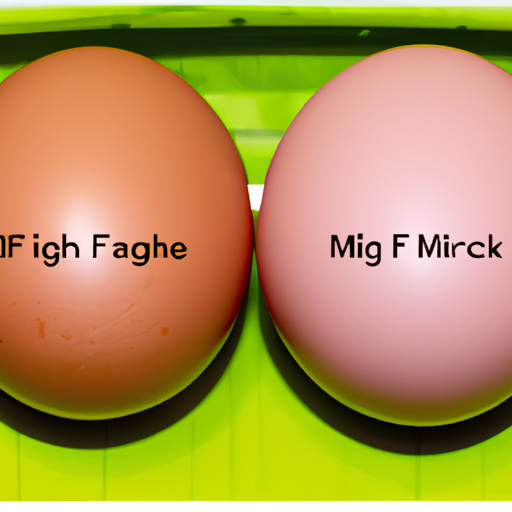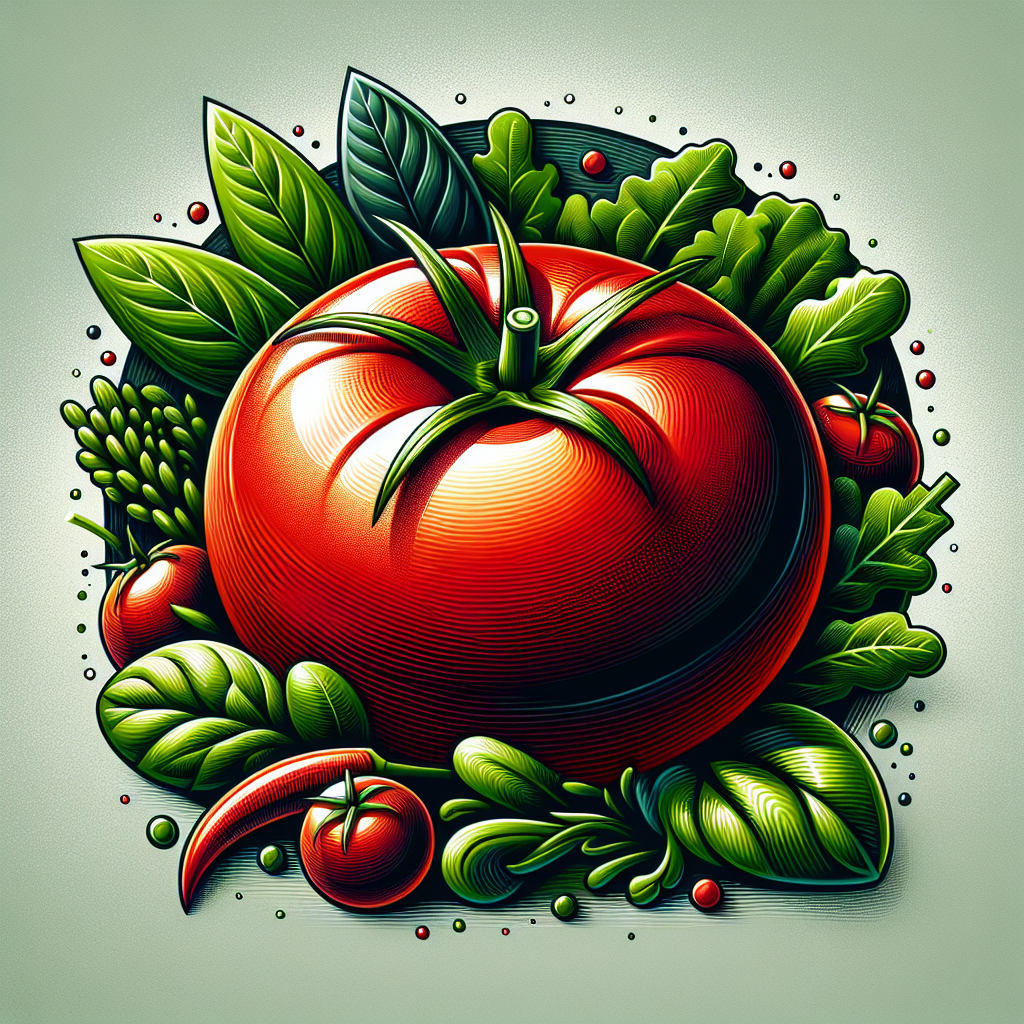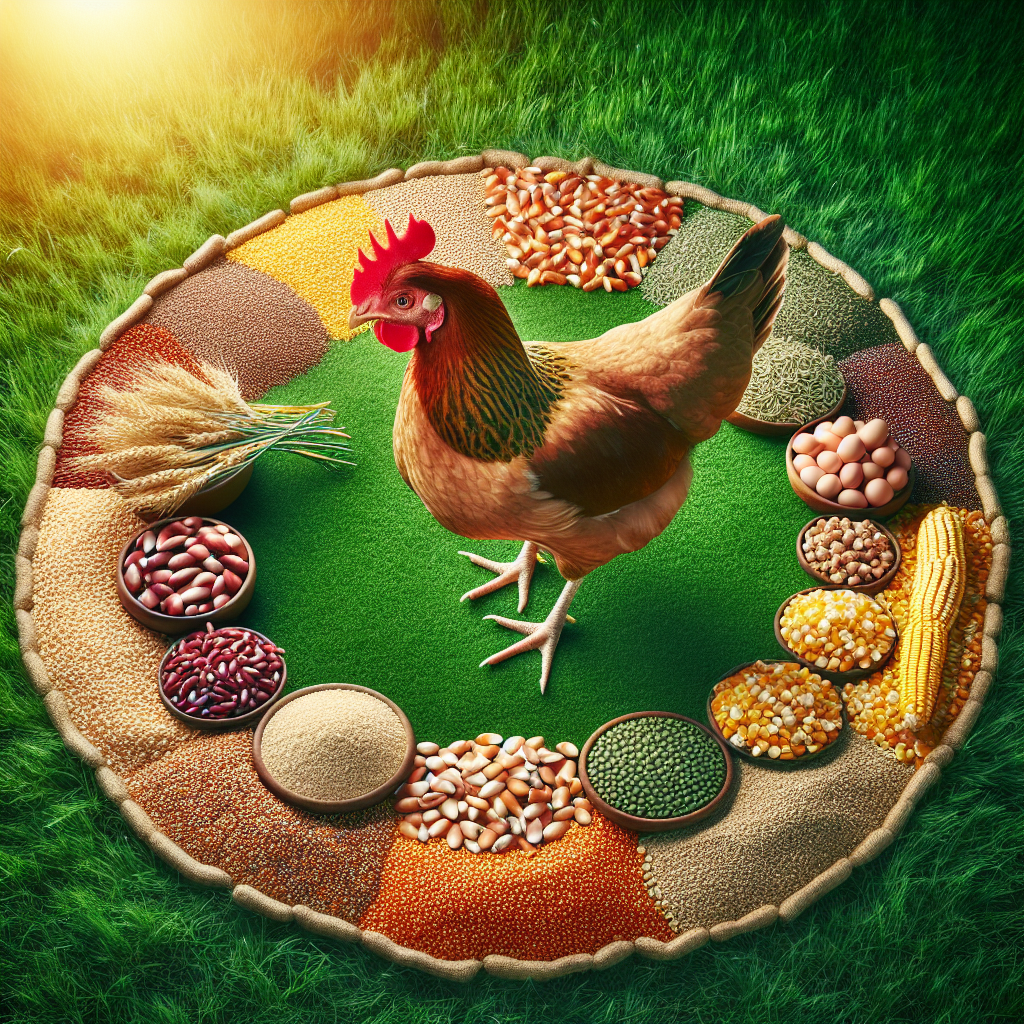In the world of chicken farming, it’s important to know the difference between organic and non-organic chicken feeds. Whether you’re a seasoned farmer or just starting out, understanding the primary distinctions between these two types of feeds can have a significant impact on the health and well-being of your flock. From the sourcing of ingredients to the use of pesticides, this article will explore the key factors that set organic and non-organic chicken feeds apart. So, grab a cup of coffee and let’s journey into the world of poultry feeding together!
Overview
When it comes to feeding your chickens, choosing between organic and non-organic chicken feed is an important decision. Organic chicken feed is made from high-quality, organic ingredients that are free from pesticides, chemicals, growth hormones, and antibiotics. On the other hand, non-organic chicken feed may contain conventional ingredients that have been treated with pesticides and chemicals, and may also contain growth hormones and antibiotics. In this article, we will explore the various aspects of organic and non-organic chicken feed, including their ingredients, nutritional content, use of growth hormones and antibiotics, presence of pesticides and chemicals, quality control measures, cost, environmental impact, sourcing and availability, and their potential impact on the taste and quality of chicken.
Ingredients
Organic Chicken Feed Ingredients
Organic chicken feed is made from a carefully selected combination of organic ingredients. These ingredients include certified organic grains, such as corn, wheat, and barley, as well as organic protein sources like soybean meal and fish meal. Organic chicken feed also contains organic minerals and vitamins to ensure that chickens receive a well-balanced diet. The organic ingredients used in organic chicken feed are grown without the use of synthetic fertilizers, pesticides, or genetically modified organisms (GMOs).
Non-Organic Chicken Feed Ingredients
Non-organic chicken feed may contain a variety of conventional ingredients. These ingredients can include conventionally grown grains, such as corn, wheat, and barley, as well as protein sources like soybean meal. However, non-organic chicken feed may also contain by-products from industries such as the bakery and confectionery industry, which may not meet the same standards as organic chicken feed. It is important to note that non-organic chicken feed may contain ingredients that have been treated with pesticides and chemicals, and may also contain GMOs.
Nutritional Content
Organic Chicken Feed Nutritional Content
Organic chicken feed is formulated to provide chickens with a well-balanced diet that meets their nutritional needs. The organic ingredients used in organic feed are typically high in natural vitamins, minerals, and other nutrients. This helps to ensure that chickens are receiving a wholesome diet that supports their growth and development. Organic chicken feed is also free from artificial additives, fillers, and preservatives.
Non-Organic Chicken Feed Nutritional Content
Non-organic chicken feed may vary in terms of its nutritional content. While non-organic feed can still provide the necessary nutrients for chickens, the quality and composition of these nutrients may differ. The use of conventional ingredients and the potential presence of additives, fillers, and preservatives in non-organic feed may impact the overall nutritional value. However, it is important to note that both organic and non-organic chicken feed can be formulated to meet the nutritional needs of chickens.
Growth Hormones and Antibiotics
Organic Chicken Feed – No Growth Hormones or Antibiotics
One of the key differences between organic and non-organic chicken feed is the use of growth hormones and antibiotics. Organic chicken feed is made from ingredients that are free from growth hormones and antibiotics. This means that chickens fed with organic feed will not be exposed to these substances. Instead, organic farming practices focus on promoting the natural growth and health of chickens through proper nutrition and care.
Non-Organic Chicken Feed – Possible Presence of Growth Hormones and Antibiotics
Non-organic chicken feed may contain conventional ingredients that have been treated with growth hormones and antibiotics. These substances are used in conventional farming practices to promote faster growth and prevent diseases in chickens. While the use of growth hormones and antibiotics in non-organic chicken feed is regulated by government agencies, there is still a possibility of their presence. It is important to note that the use of growth hormones and antibiotics can have potential impacts on human health and the environment.
Pesticides and Chemicals
Organic Chicken Feed – Absence of Pesticides and Chemicals
A major advantage of organic chicken feed is that it is free from pesticides and chemicals. Organic farming practices prioritize the use of natural fertilizers, pest control measures, and crop rotation to maintain soil health and control pests. This ensures that the organic ingredients used in organic feed are grown without the use of synthetic pesticides, herbicides, and fertilizers. This absence of pesticides and chemicals in organic feed reduces the risk of these substances entering the food chain and potentially impacting human health.
Non-Organic Chicken Feed – Potential Presence of Pesticides and Chemicals
Non-organic chicken feed may contain conventionally grown ingredients that have been treated with pesticides, herbicides, and fertilizers. These chemicals are used in conventional farming practices to control pests, enhance crop yields, and control weeds. However, the use of pesticides and chemicals in non-organic feed raises concerns about the potential presence of residues in the feed and the potential for these substances to accumulate in chicken meat and eggs. It is important to consider these factors when choosing between organic and non-organic chicken feed.
Quality Control
Organic Chicken Feed – Regulations and Certification
The production of organic chicken feed is regulated by various government agencies and certifying bodies. These regulations ensure that organic feed meets specific standards and requirements. Organic feed manufacturers must adhere to strict guidelines regarding ingredient sourcing, production processes, and labeling. Organic feed is also subjected to regular inspections and auditing to maintain its organic certification. The involvement of regulatory bodies and certification processes ensures that organic chicken feed meets high-quality standards.
Non-Organic Chicken Feed – Limited Quality Control
In comparison, the quality control measures for non-organic chicken feed are generally less stringent. While non-organic feed manufacturers must comply with basic food safety regulations, there may be less oversight regarding ingredient sourcing and production practices. This can lead to variations in the quality and consistency of non-organic chicken feed. It is important for consumers to be aware of the limited quality control measures associated with non-organic feed and to consider the potential impacts on the health and well-being of their chickens.
Cost
Organic Chicken Feed – Higher Cost
One of the factors to consider when choosing between organic and non-organic chicken feed is the cost. Organic chicken feed tends to be more expensive than non-organic feed. This higher cost is primarily due to the higher cost of organic ingredients and the additional requirements for organic production, such as organic certification fees and more labor-intensive farming practices. However, it is important to weigh the higher cost against the potential benefits of organic feed, such as reduced exposure to pesticides, chemicals, and the absence of growth hormones and antibiotics.
Non-Organic Chicken Feed – Lower Cost
Non-organic chicken feed is generally more affordable compared to organic feed. The lower cost of non-organic feed can be attributed to the use of conventionally grown ingredients and less stringent production requirements. While non-organic feed may be more budget-friendly, it is important to consider the potential trade-offs in terms of the quality of ingredients and the potential presence of pesticides, chemicals, growth hormones, and antibiotics.
Environmental Impact
Organic Chicken Feed – Sustainable Farming Practices
Organic chicken feed is produced using sustainable farming practices that prioritize environmental stewardship. Organic farming practices focus on soil health, water conservation, biodiversity, and the use of natural resources. Organic farms promote crop rotation, composting, and the use of natural fertilizers and pest control methods. By choosing organic chicken feed, you are supporting farming practices that aim to minimize the impact on the environment and promote long-term sustainability.
Non-Organic Chicken Feed – Environmental Concerns
The production of non-organic chicken feed can have environmental implications. The use of conventional farming practices, such as the use of synthetic fertilizers, pesticides, and herbicides, can contribute to soil degradation, water pollution, and the loss of biodiversity. Additionally, the widespread use of growth hormones and antibiotics in conventional farming can lead to environmental concerns, such as the development of antibiotic-resistant bacteria and the potential contamination of water sources. It is important to carefully consider the environmental impact when choosing between organic and non-organic chicken feed.
Sourcing and Availability
Organic Chicken Feed – Limited Suppliers and Availability
While the demand for organic chicken feed is increasing, it is important to note that the availability of organic feed may be limited compared to non-organic feed. Organic feed is produced by a smaller number of suppliers and may only be available in certain regions or specialty stores. This limited availability can make it more challenging to source organic feed, especially for those living in rural areas. However, the growing demand for organic products has led to an increase in the number of suppliers and the availability of organic chicken feed in recent years.
Non-Organic Chicken Feed – Widespread Availability
Non-organic chicken feed is widely available and can be found in most feed supply stores, agricultural supply stores, and online. The widespread availability of non-organic feed makes it convenient and accessible for chicken owners. It is important to do thorough research and read labels when purchasing non-organic feed to ensure that you understand the ingredients and potential additives present in the feed.
Taste and Quality of Chicken
Organic Chicken Feed – Potential Impact on Taste and Quality
The type of chicken feed used can potentially impact the taste and quality of the chicken. Chickens fed with organic feed are consuming a diet that is free from pesticides, chemicals, growth hormones, and antibiotics. This clean diet may result in a more natural and flavorful taste in the meat and eggs produced by these chickens. Additionally, organic feed can contribute to the overall quality of the chicken’s health and well-being, which can further enhance the taste and quality of the meat.
Non-Organic Chicken Feed – Potential Impact on Taste and Quality
Non-organic chicken feed may contain conventional ingredients that have been treated with pesticides, chemicals, growth hormones, and antibiotics. These substances can potentially impact the taste and quality of the chicken meat and eggs. The use of growth hormones and antibiotics can affect the texture and flavor of the meat, while the presence of pesticides and chemicals can introduce unwanted residues that may alter the taste. It is important to consider these potential impacts when selecting the type of feed for your chickens.
In conclusion, choosing between organic and non-organic chicken feed requires careful consideration of various factors. Organic chicken feed offers the benefits of organic ingredients, absence of pesticides and chemicals, no growth hormones or antibiotics, stringent quality control, sustainable farming practices, and potential impact on taste and quality. However, it also comes with a higher cost and limited availability. Non-organic chicken feed, on the other hand, is more affordable and widely available but may contain conventionally grown ingredients, potential presence of pesticides and chemicals, possible use of growth hormones and antibiotics, limited quality control, and environmental concerns. Ultimately, the decision between organic and non-organic chicken feed relies on your priorities, values, and the specific needs of your chickens.




